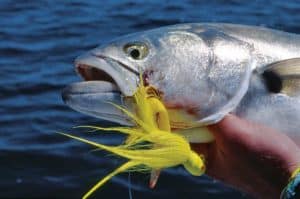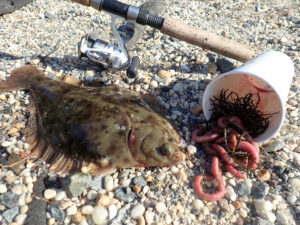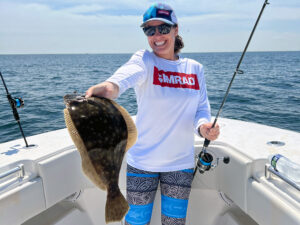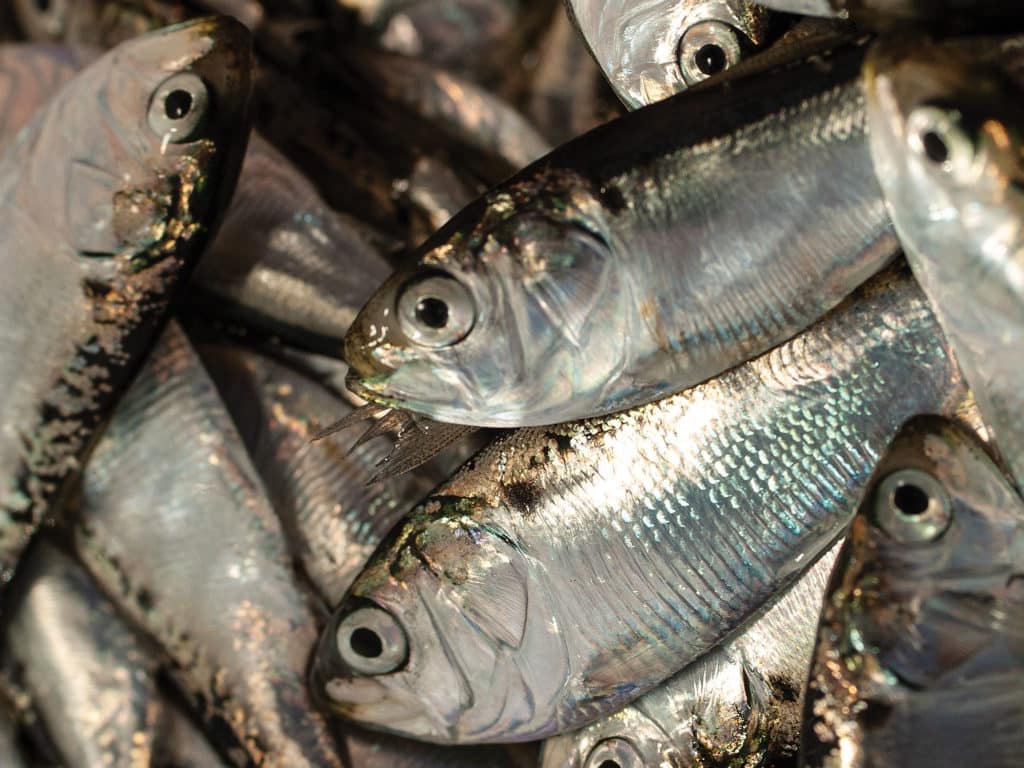
Given a choice, most offshore and inshore anglers would fish live bait for everything, from seatrout and sailfish to tarpon and tuna. But sometimes, fishermen deliberately choose dead bait, and not just when they run out of liveys or during a dead-bait-only tournament. Dead ballyhoo, menhaden, mullet and bonito, as well as strips and chunks of those baitfish, can at times actually be more effective than live bait.
A dead bait can be deployed exactly where and how it needs to be fished, whereas a live bait can swim out of the target zone or tangle another line. In addition, the scent of a fresh dead bait can prove more attractive to predators than the nervousness of a live bait. Some predators also prefer an easy meal over chasing a live bait.
The Dead Bait Tarpon Rig
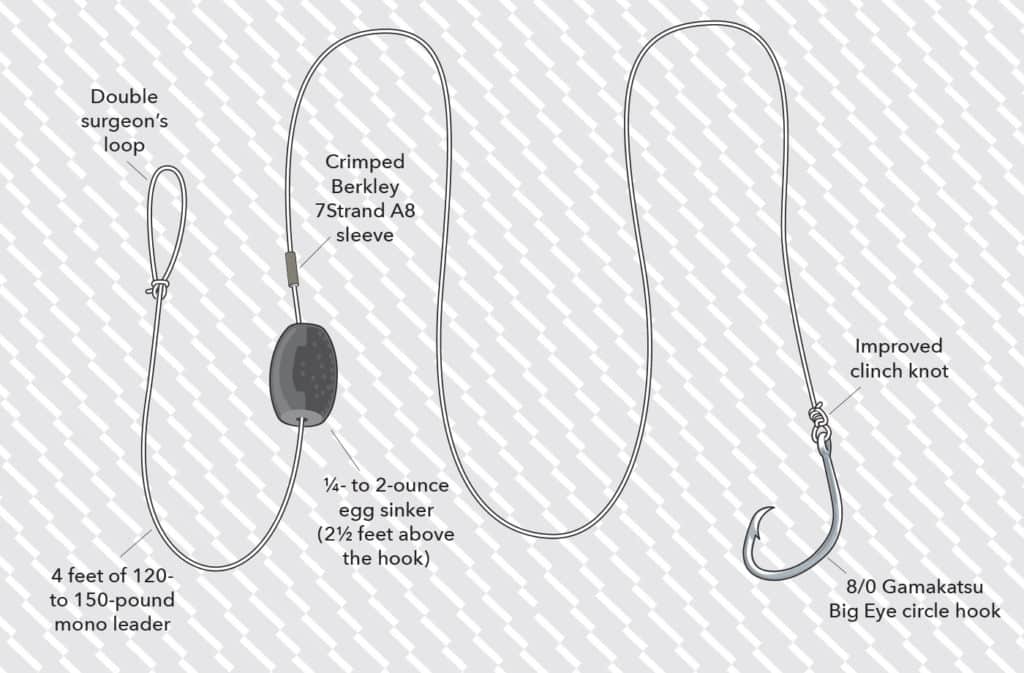
“A tarpon may be a silver king, but he’s still a scavenger,” says Capt. Greg Hildreth of St. Simons Island, Georgia, who almost always puts out some dead baits on the bottom when he’s fishing for poons. Hildreth (georgiacharterfishing.com) uses dead Atlantic menhaden, more commonly known as pogies, and fishes in water depths from 8 to 25 feet. “I’ll fish four or five rods, some with live bait, some with dead,” Hildreth says. “I’ll fish at least two live baits on top and dead baits on or close to the bottom.”
Hildreth castnets his live pogies the morning of a tarpon trip and puts some of the baits on ice. He hooks a dead pogy through the eyes on an 8/0 Gamakatsu circle hook. Hildreth says the large hook size works because of coastal Georgia’s poor water clarity.
“I figure bigger is better, just for the simple fact that I can put a lot of pressure on these fish, and get them to the boat fast and released,” he explains, adding that he uses scissors to cut off the pogy’s tail. “That keeps it from spinning in the current and puts scent in the water.”
He fishes Penn International reels, spooled with 80-pound braided line, and attaches 4 feet of 120- to 150-pound monofilament leader to the main line with a 150-pound snap snivel. Hildreth adds a quarter-ounce egg sinker to the leader to fish the pogy midwater. If he wants the bait on the bottom, he’ll use a 1½- to 2-ounce lead. To keep the sinker from sliding too far, he crimps a sleeve 2½ feet above the hook. At the terminal end of the leader, he ties on the hook with an improved clinch knot, which “gives the hook what it needs to set when it’s in the rod holder.”
Targeting Red Drum with Dead Bait
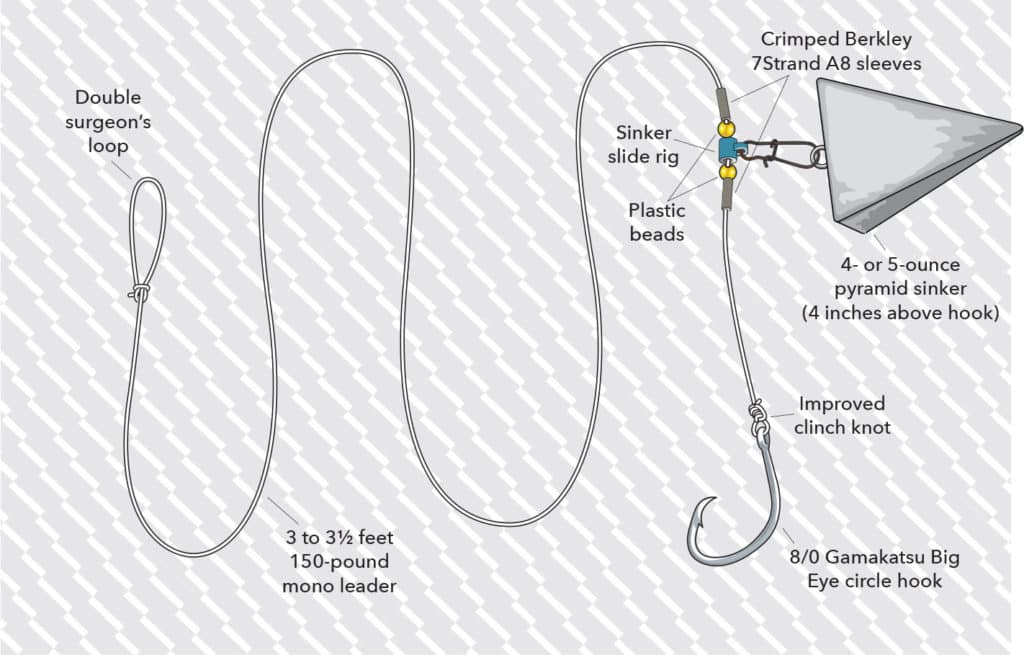
Hildreth also fishes dead pogies on the same 8/0 inline circle hook for bull redfish. His tackle includes Penn Spinfisher 7500 reels and Penn Carnage rods. He rigs a 4- or 5-ounce pyramid sinker 4 inches above the hook to prevent the big reds—which typically range from 18 to 30 pounds—from inhaling the bait too deeply.
He crimps the sinker in place on a 150-pound monofilament leader that is 3 to 3½ feet long. The heavy leader doesn’t spook the fish, and makes it easy for Hildreth to take a double-wrap and lift the fish into the boat.
Chunks of mullet or whiting also catch redfish, and Hildreth sometimes uses the remnants of legal-size trout that he’s filleted. “When I’m speckled trout fishing, if I know I’m going to fish for bull redfish in a day or so, I’ll keep the carcasses of the trout, the head being the best bait. Anything that smells nasty and fishy, they’ll eat,” he says. “If it’s a small trout, 14 to 15 inches (14 inches is Georgia’s legal minimum), I’ll go right through the eye sockets with the hook. If it’s a bigger trout, I’ll go from the bottom lip to the top lip.”
Trolling Bonito Strips
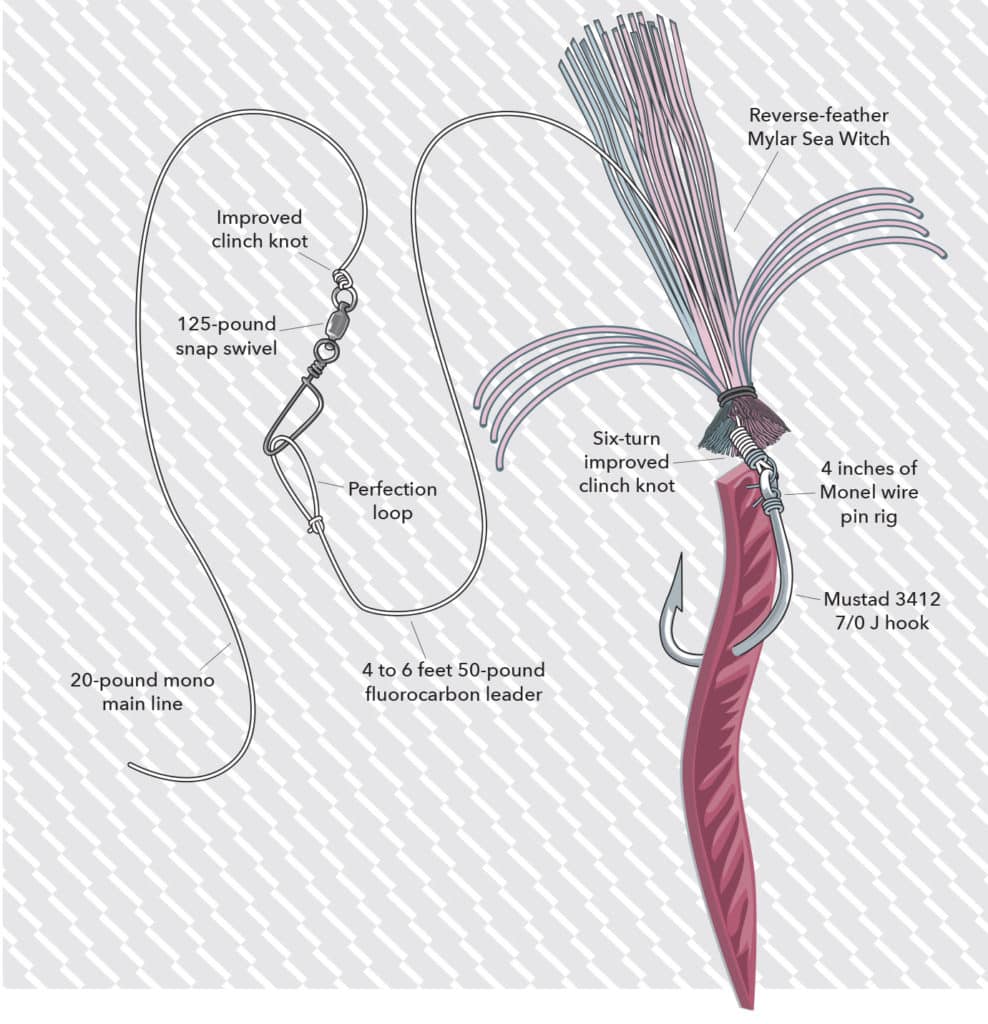
Capt. Abie Raymond trolls bonito strips for bonito, kingfish, sailfish, tuna, wahoo and dolphin out of Miami Beach, Florida. To prepare his baits, he fillets a bonito and removes most of the meat with a knife blade, until the fillet is ⅛ inches thick. That allows the hook to penetrate a fish’s mouth more efficiently.
He cuts the fillet with the blade angled to produce a beveled edge, which is hydrodynamic, yielding a strip that resembles a thin baitfish. Raymond squares off one end—which will serve as the top of the strip—and pokes a hole in it with the knife. He sprinkles kosher salt over the strips to remove water from them and toughen them up, then places them in a zip-closure plastic bag.
To fish them, Raymond uses Penn International 16 reels spooled with 20-pound line. The leader setup starts with 4 to 6 feet of 50-pound fluorocarbon. He ties a perfection loop at one end and clips it into a snap swivel. The terminal end of the leader features a flashy, reverse-feather Mylar Sea Witch—his favorite colors are pink-and-blue and blue-and-white—above a Mustad 7/0 J hook tied to the leader with a six‑turn improved clinch knot.
Raymond inserts a 4-inch piece of Monel wire through the hook eye, wraps it below the eye three times, and then threads it back through the eye. He runs the Monel through the hole at the top of the strip so the meat side of the strip runs along the shank of the hook. He then wraps the wire below the tag end of the clinch knot to secure the strip, and pokes the hook point through the center of the strip.
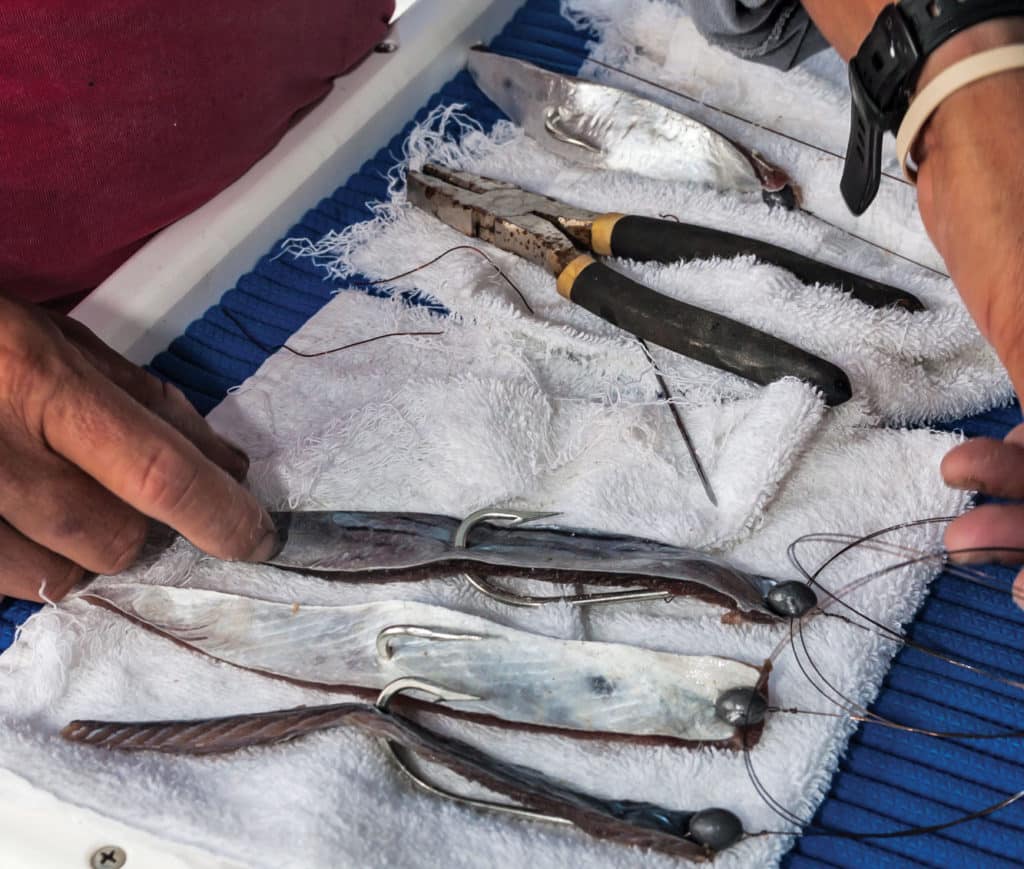
“That’s our favorite dead bait to work with [from June through September],” Raymond says. “We’ll put out two of those strip baits on our outriggers 80 to 120 feet behind the boat, along with a lure like a Billy Bait or Dolphin Jr. We stagger them: A 20-foot feather, a 40-foot feather, an 80-foot strip and a 100-foot strip would be our typical four-bait spread.”
Raymond favors trolling bonito strips over ballyhoo because strips last longer and can be cut to resemble a 4-, 6- or 8-inch flying fish, its wings imitated by the Sea Witch. “Another huge advantage of a strip over a ballyhoo is if a sailfish grabs a ballyhoo and rips off the tail, you’re done. A bonito strip, he’ll just grab it and grab it. It might stretch and get longer, and the meat might come off, but the skin’s still there swimming and looking beautiful,” he says.
Dead ballyhoo, of course, still remain a popular trolling bait, especially for dolphin. Raymond rigs skirted ballyhoo on a Mustad 3417 7/0 J hook tied to a 15-foot, 50-pound monofilament wind-on leader on a 20-pound spinning outfit. “You fish it like a strip, 80 to 120 feet behind an outboard boat, 60 to 100 feet behind an inboard boat,” Raymond says. “You want to troll at 6 to 6½ knots.”
Whether they’re dead or alive, fresh natural baits—rigged meticulously and fished properly—consistently produce for anglers whether offshore on the troll or nearshore on the bottom. Use each option to your advantage. Dead bait might be old-school, but it never goes out of style.

